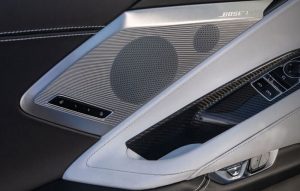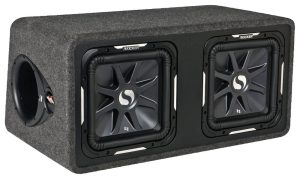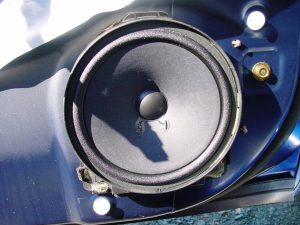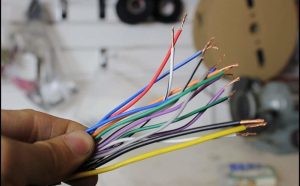Skar Audio amplifiers power car audio systems with impressive clarity and strength. However, these high-performance amps can overheat if not managed properly, leading to reduced sound quality, unexpected shutdowns, or even permanent damage. Overheating often stems from poor installation, inadequate ventilation, or pushing the amp beyond its limits. By following practical strategies, you can keep your Skar amp running cool and ensure your car stereo delivers top-notch performance for years. This guide explores actionable tips to prevent overheating, optimize your setup, and maintain your amplifier’s longevity, all while keeping your audio experience crisp and powerful.
Contents
- Why Skar Amps Overheat
- Optimize Your Amplifier’s Installation Location
- Improve Ventilation with Cooling Accessories
- Use Proper Wiring and Connections
- Match Impedance and Load Correctly
- Adjust Gain and Settings Properly
- Monitor Your Listening Habits
- Maintain Your Skar Amp Regularly
- Upgrade Your Car’s Electrical System
- Choose the Right Skar Amp for Your Setup
- Know When to Seek Professional Help
- Enjoy Cool, High-Quality Sound
Why Skar Amps Overheat
Skar amps, like any car audio amplifier, generate heat during operation. The internal components, such as transistors and power supplies, produce heat as they process electrical signals to amplify sound. Several factors contribute to overheating:
- Poor Ventilation: Installing the amp in a cramped space traps heat.
- High Volume Levels: Constantly running the amp at maximum output stresses its components.
- Improper Wiring: Undersized or low-quality wires increase resistance, causing the amp to work harder.
- Incorrect Impedance Matching: Pairing the amp with speakers or subwoofers at the wrong impedance forces it to overcompensate.
- Environmental Factors: Hot climates or direct sunlight amplify heat buildup.
Understanding these causes helps you take proactive steps to keep your amp cool. Let’s dive into practical solutions to prevent overheating and protect your Skar amplifier.
Optimize Your Amplifier’s Installation Location
The location of your Skar amp plays a critical role in heat management. A well-chosen spot promotes airflow and reduces heat buildup. Follow these tips to select the ideal installation site:
- Choose an Open Area: Mount the amp in a location with ample space, such as under a seat, in the trunk, or on a custom amp rack. Avoid stuffing it into tight compartments like glove boxes or sealed panels.
- Ensure Air Circulation: Leave at least 2-3 inches of clearance around the amp’s sides and top. This allows air to flow freely and dissipate heat.
- Avoid Heat Sources: Keep the amp away from car components that generate heat, such as exhaust systems or radiators. Also, avoid direct sunlight exposure, which can raise the amp’s temperature.
- Use a Raised Mount: Elevate the amp slightly using spacers or a rack. This prevents heat from being trapped against the car’s floor or upholstery.
For example, installing the amp in the trunk with a custom rack ensures airflow while keeping it secure. A proper setup reduces the risk of overheating and enhances the amp’s performance.
Improve Ventilation with Cooling Accessories
Even with a good installation spot, your Skar amp may need extra help to stay cool, especially during long drives or high-volume sessions. Cooling accessories provide an effective solution. Consider these options:
- Install Cooling Fans: Add small, low-noise fans near the amp to improve airflow. Fans designed for car audio systems are compact and easy to integrate.
- Use Heat Sinks: Attach aftermarket heat sinks to the amp’s chassis. These metal fins absorb and dissipate heat, lowering the amp’s operating temperature.
- Opt for Ventilated Amp Covers: Some covers feature built-in vents or mesh designs that promote airflow while protecting the amp from dust and debris.
- Add Thermal Pads: Place thermal pads between the amp and its mounting surface. These pads transfer heat away from the amp, reducing temperature spikes.
When selecting cooling accessories, choose products compatible with your Skar amp model. For instance, a 12-volt cooling fan wired to your car’s electrical system can keep air moving without draining the battery. These additions create a cooler environment for your amp, ensuring consistent performance.
Use Proper Wiring and Connections
Wiring quality directly impacts your Skar amp’s efficiency and heat output. Low-quality or undersized wires increase electrical resistance, forcing the amp to work harder and generate more heat. To avoid this, prioritize high-quality wiring:
- Select the Right Gauge: Use the appropriate wire gauge for your amp’s power requirements. For Skar amps, 4-gauge or 8-gauge oxygen-free copper (OFC) wires are often recommended for power and ground connections.
- Keep Wires Short: Minimize wire length to reduce resistance. Long wires create more heat and energy loss.
- Secure Connections: Tighten all terminal connections to prevent loose contacts, which can cause arcing and heat buildup.
- Use Quality Accessories: Invest in high-grade fuses, distribution blocks, and connectors. Cheap components can fail under high current, leading to overheating.
For example, a Skar RP-2000.1D amp paired with a 4-gauge OFC wiring kit ensures efficient power delivery, reducing strain on the amp. Regularly inspect wires for wear or corrosion, as damaged cables can compromise performance and safety.
Match Impedance and Load Correctly
Impedance mismatching is a common cause of amplifier overheating. Skar amps are designed to work with specific speaker or subwoofer impedance (measured in ohms). Pairing the amp with an incorrect load forces it to overwork, generating excessive heat. To prevent this:
- Check Amp Specifications: Review your Skar amp’s manual to confirm its impedance range. Most Skar amps support 1-ohm, 2-ohm, or 4-ohm loads, depending on the model.
- Verify Speaker/Subwoofer Impedance: Ensure your speakers or subwoofers match the amp’s impedance rating. For instance, a 2-ohm subwoofer paired with a 2-ohm stable amp creates an efficient setup.
- Avoid Overloading: Don’t connect too many speakers or subwoofers to a single amp. Overloading reduces impedance below the amp’s capacity, causing it to overheat.
- Use Wiring Configurations: Wire subwoofers in series or parallel to achieve the desired impedance. For example, wiring two 4-ohm subwoofers in parallel creates a 2-ohm load.
If you’re unsure about impedance matching, consult a professional car audio installer. A properly matched system minimizes heat and maximizes sound quality.
Adjust Gain and Settings Properly
Incorrectly set gain or audio settings can push your Skar amp beyond its limits, leading to overheating. Gain controls the input signal level, and setting it too high causes clipping, which stresses the amp. Follow these steps to optimize settings:
- Set Gain Correctly: Use a multimeter or an oscilloscope to adjust the gain. Play a test tone (e.g., 50 Hz for subwoofers) and increase the gain until the output voltage matches the amp’s rated RMS power.
- Avoid Clipping: Clipping occurs when the amp distorts the audio signal, generating excess heat. Listen for distortion and lower the gain if you hear it.
- Balance Crossover Settings: Adjust the low-pass or high-pass filters to ensure the amp only processes the intended frequencies. For example, a subwoofer amp should filter out high frequencies.
- Limit Bass Boost: Excessive bass boost increases the amp’s workload. Use it sparingly or disable it for cleaner output.
Properly tuned settings reduce strain on the amp, keeping it cool while delivering crisp, distortion-free sound. If you’re new to tuning, watch tutorials specific to Skar amps or seek help from an audio technician.
Monitor Your Listening Habits
Your listening habits impact how hard your Skar amp works. Constantly blasting music at maximum volume or playing bass-heavy tracks for extended periods can overheat the amp. Adopt these practices to manage heat:
- Take Breaks: Give the amp a rest during long drives. Lower the volume or turn off the system periodically to let the amp cool down.
- Vary Music Genres: Mix bass-heavy tracks with lighter genres to reduce the amp’s workload. Continuous bass puts more strain on the amp.
- Use Moderate Volume Levels: Keep the volume at 70-80% of the amp’s capacity for daily listening. Reserve full power for short bursts or competitions.
- Monitor Temperature: If your amp feels hot to the touch, reduce the volume and check for ventilation issues. Some Skar amps have built-in thermal protection that shuts them down if they overheat.
By balancing your listening habits, you prevent the amp from running at full tilt, extending its lifespan and maintaining sound quality.
Maintain Your Skar Amp Regularly
Routine maintenance keeps your Skar amp in top shape and prevents heat-related issues. Dust, debris, and loose connections can hinder performance and cause overheating. Follow these maintenance tips:
- Clean the Amp: Use compressed air or a soft brush to remove dust from the amp’s surface and vents. Dust buildup traps heat and reduces airflow.
- Inspect Connections: Check power, ground, and speaker wires for looseness or corrosion. Tighten or replace as needed.
- Test the Battery: A weak car battery forces the amp to draw more current, generating heat. Ensure your battery and alternator are in good condition.
- Update Firmware: Some Skar amps have firmware updates that improve efficiency. Check the manufacturer’s website for updates.
Schedule maintenance every 3-6 months, depending on usage. A well-maintained amp runs cooler and performs better.
Upgrade Your Car’s Electrical System
Skar amps, especially high-power models like the RP-3500.1D, demand significant electrical current. A weak electrical system can’t supply enough power, causing the amp to overheat. Consider these upgrades:
- Install a High-Output Alternator: A stock alternator may struggle to support a powerful amp. Upgrade to a 200-300 amp alternator for consistent power delivery.
- Add a Secondary Battery: A dedicated audio battery near the amp reduces voltage drops and stabilizes power.
- Use a Capacitor: A capacitor stores energy and supplies quick bursts of power, reducing strain on the amp during bass hits.
- Upgrade Grounding: Ensure the amp’s ground connection is secure and uses a thick, short wire to a clean metal surface.
These upgrades create a robust electrical foundation, allowing your Skar amp to operate efficiently without overheating.
Choose the Right Skar Amp for Your Setup
Selecting the right Skar amp for your audio system prevents overheating from the start. An underpowered amp struggles to drive large subwoofers, while an overpowered amp may run inefficiently with smaller speakers. To choose wisely:
- Match RMS Power: Pair the amp’s RMS power rating with your speakers or subwoofers. For example, a Skar SVR-12 subwoofer (800W RMS) pairs well with an RP-800.1D amp.
- Consider Your Goals: Decide if you want loud bass for competitions or balanced sound for daily driving. Skar offers amps for various needs, from compact to high-output models.
- Check Efficiency: Look for amps with Class D technology, which runs cooler than Class A/B amps due to higher efficiency.
- Read Reviews: Check user reviews for real-world insights on heat performance. Models like the Skar SKv2-1500.1D are praised for efficient cooling.
Choosing the right amp ensures it operates within its designed limits, reducing the risk of overheating.
Know When to Seek Professional Help
If your Skar amp continues to overheat despite following these tips, a professional car audio installer can diagnose underlying issues. They can:
- Test the Amp: Use diagnostic tools to check for internal faults or inefficiencies.
- Rewire the System: Correct improper wiring or impedance mismatches.
- Optimize Installation: Relocate the amp or add advanced cooling solutions.
- Recommend Upgrades: Suggest electrical or component upgrades tailored to your setup.
Search for reputable installers in your area or consult Skar Audio’s customer support for guidance. Professional help saves time and prevents costly damage.
Enjoy Cool, High-Quality Sound
Keeping your Skar amp cool requires a combination of smart installation, quality components, and mindful usage. By optimizing ventilation, using proper wiring, matching impedance, and maintaining your system, you ensure your amp delivers powerful, distortion-free sound without overheating. Regular maintenance and electrical upgrades further enhance performance, while choosing the right amp sets the foundation for success. Implement these tips to protect your investment and enjoy an immersive audio experience on every drive. Stay proactive, keep your amp cool, and let your car stereo shine.






